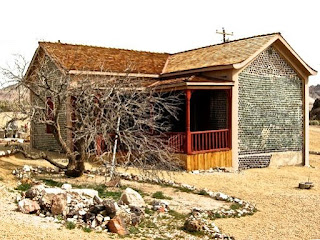Johannes "John" Keller, Jerome, Arizona

In 1903, the New York Sun proclaimed Jerome, Arizona, to be "the wickedest town in the West.” As the proprietor of the Fashion Saloon, Johannes “John” Keller knew that his establishment, advertised as “The Leading Sporting House in Northern Arizona,” was an important element in that reputation. There is no reason to believe Keller cared. Shown here in a passport photo about age 40, Keller was born in Oberlengingen, Wurttenburg, Germany, in 1880. When he was just thirteen, likely with family members, he came to the United States, embarking from Bremen, Germany, aboard the steamship Darmstadt , shown below. Keller seems almost immediately to have headed for the Arizona Territory, settling for a time in Prescott, a town noted for its “Whiskey Row.” He may have learned the saloon keeping in one of those drinking establishments. What would have brought the German youth to Jerome is unclear. The 1890s had been important decade for what heretofore had be

